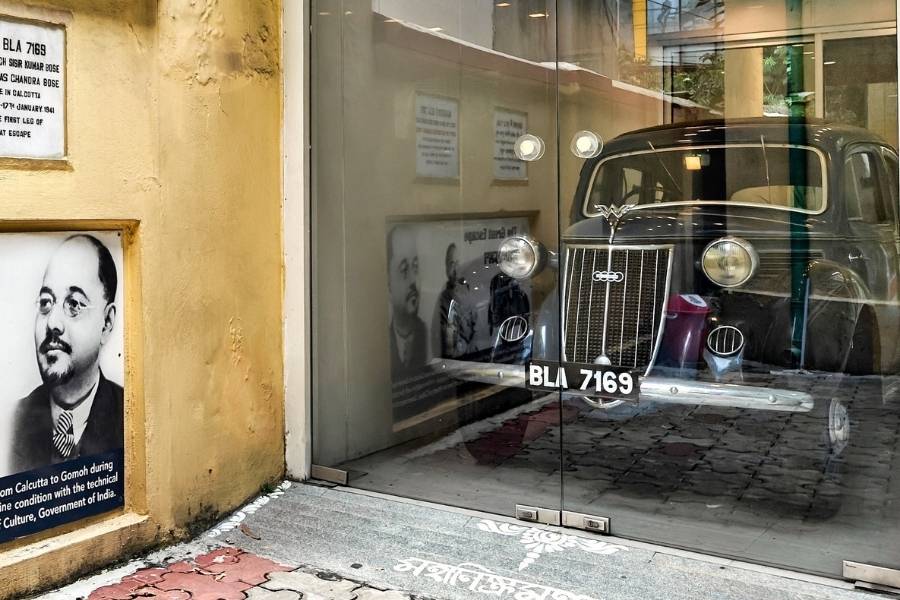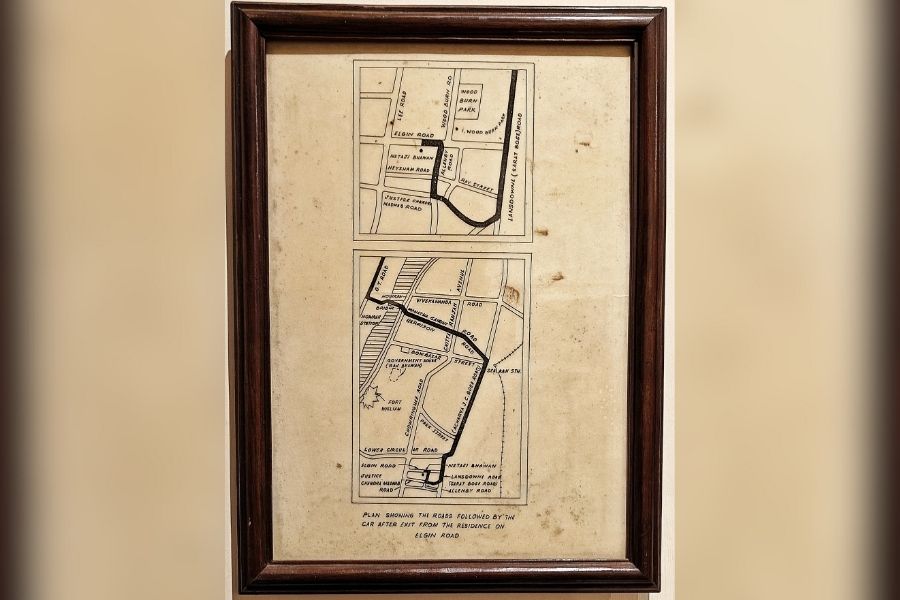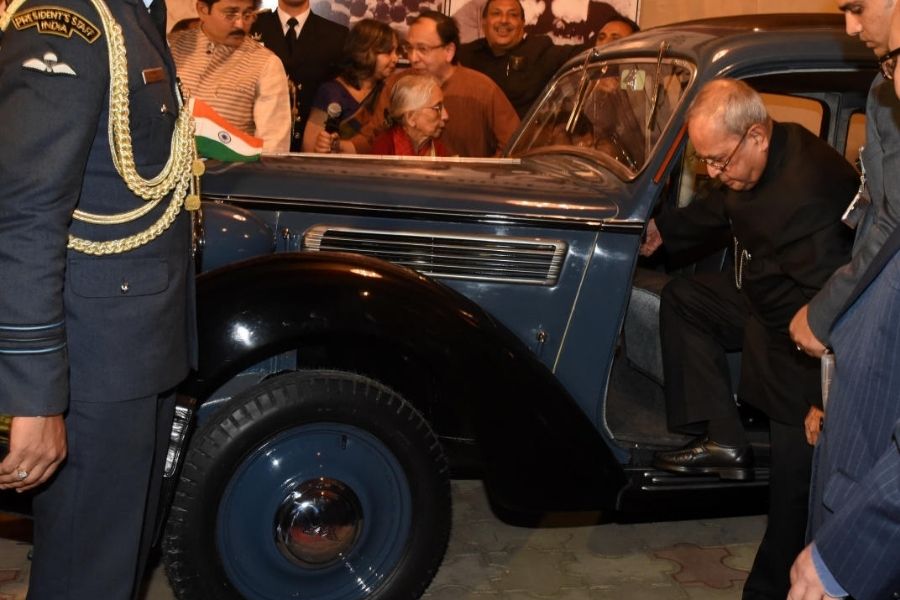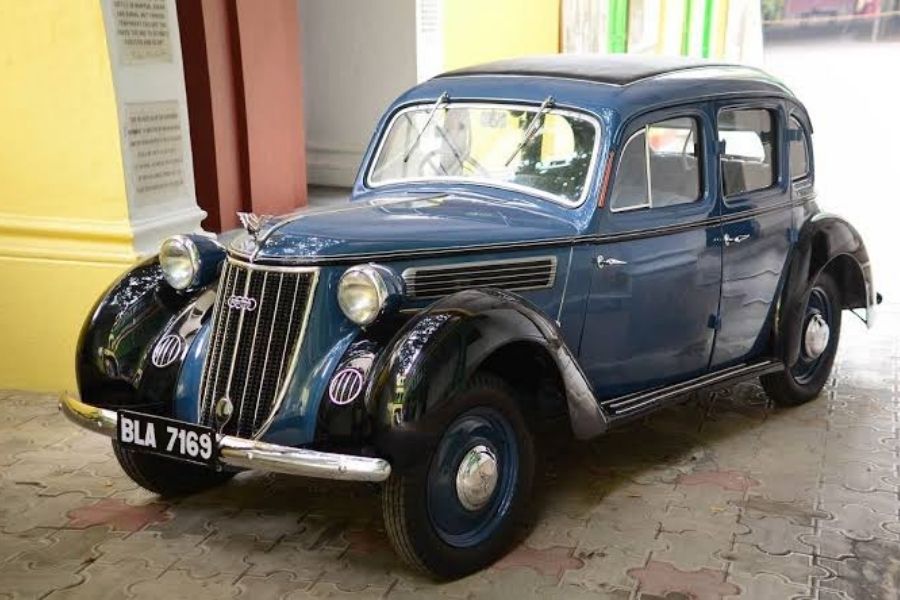In the early hours of January 17, 1941, a sleek midnight-blue sedan emerged from the quiet of Elgin Road, Calcutta. The city was asleep. Behind the wheel was 21-year-old medical student, Sisir Kumar Bose. Lying low on the floorboard of the backseat, hidden by the high doors of the car, was his uncle — Subhas Chandra Bose.
The vehicle — a 1937 Wanderer W24, made in Germany — was not just a mode of transport that night. It became a symbol of India’s underground resistance, quietly ushering Netaji out of house arrest and into a larger freedom campaign that would span continents. Today, the very same car stands in solemn dignity at Netaji Bhawan, a silent survivor of one of India’s boldest political acts.
The Wanderer W24 was originally acquired by Sarat Chandra Bose, Netaji’s elder brother, as part of the family’s modest fleet. Built by Auto Union in Chemnitz, the car featured a four-cylinder engine, steel-spoked wheels, and a remarkably high ground clearance — making it ideal for both urban drives and rough hauls.

The car featured a four-cylinder engine, steel-spoked wheels, and high ground clearance Soumyajit Dey
Though Sarat Bose’s household had other cars, including a Plymouth used for political rallies, it was the Wanderer that became a favourite. It was formally registered in the name of Sisir Bose, who, as Chandra Bose, Netaji’s grand-nephew recalled, was “confident at the wheel” and routinely drove the car around Calcutta.
“The doors were very high,” said Chandra. “If someone sat low on the footboard, like Netaji did that night, you couldn’t see them from outside.” This design quirk, unintentionally, gave the family the perfect escape vehicle. “And since it was my uncle’s car, no one raised an eyebrow when he took it out at odd hours.”
Not everyone in the Bose family was inclined toward driving. “My father, Amiya Nath Bose, tried to learn but didn’t follow through,” said Chandra. “It was Sisir and Subrata who were natural drivers.”

The Wanderer at Netaji Bhawan Soumyajit Dey
On the night of the escape, the plan was executed with near-military precision. Netaji emerged from his residence around 1am, dressed in a long coat and an aviator cap. With his niece guarding the front entrance and the British CID posted just down the road, silence was essential. Only one door was closed audibly — to maintain the illusion that the car carried just one passenger.
Their journey took them along Chowringhee, then northward across the Howrah Bridge, before blending into the Grand Trunk Road. The car covered roughly 300 kilometres, pausing occasionally for fuel or caution. Their final destination was Gomoh railway station in present-day Jharkhand, where Netaji boarded the Kalka Mail posing as “Mohammad Ziauddin.”

The route map Soumyajit Dey
Though the train would carry him beyond British control, it was the car — and the driver — that got him to the tracks of freedom.
After its role in the Great Escape, the Wanderer remained with the family for several years before being formally handed over to the Netaji Research Bureau. By the time Chandra Bose was born, it had long since stopped running. “It wasn’t used anymore by the time I was born,” he said.
In 2016, to mark the 75th anniversary of the escape, the car was meticulously restored. “It hadn’t been used in decades,” recalls Chandra, “but it was overhauled for the event. I believe Pranab Mukherjee was present.”

President Pranab Mukherjee takes a closer look The Telegraph Archives
The former President even sat in the vehicle during a ceremonial ride. “Some people objected, saying such a car shouldn’t be touched or driven,” Chandra notes. “But I think if anyone had the right to sit in it, it was the President of India.”
The car was proven roadworthy once again, though it remains largely stationary today. It sits at Netaji Bhawan, its glass frame still intact, its silhouette untouched by time — more than a vehicle, it is a vessel of memory, parked forever at the junction of freedom and defiance.
